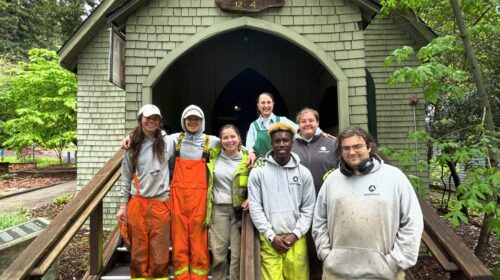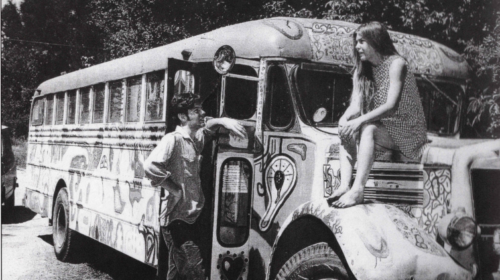Closer Together, Further Apart
By Jessica Tunis
It might be the understatement of the decade to say that things have been turned upside down lately. In a few short weeks, our lives have been drastically altered by a potentially deadly new disease, and rapid social and economic upheaval has jolted everyone out of their routines. Terms like “shelter in place” and “social distancing” have entered the lexicon, and panic-buying has emptied the shelves of pantry staples and hand sanitizer. We live in interesting times.
We’re all coping in different ways. Down at the store, we’re taking orders over the phone for everything from fertilizer to dog food to vegetable starts, and setting it out for folks to pick up curbside. Mostly, we can’t greet customers as we are used to, because we are hidden from view packing orders and responding to queries. At grocery stores, pharmacies, and at the farm supply, many work overtime, at no small risk to themselves, to provide essential goods and services to the community.
This virus has caused so much damage and wreaked havoc on so many lives and livelihoods, to list them all here would take more time and tears than we have. And still, it is not close to over, and more losses will be counted.
But amidst those losses, blessings rise like seedlings watered by the spring rain. Without minimizing the struggle, we urge you to count blessings. Water them like seedlings, or, like wishes blown from a dandelion seed head, let them grow in cracks that have opened. Hold your loved ones close, in heart if not in body.
In this age of digital connectivity, we have tools to connect with friends and family near and far. Suddenly, we have the time to do so. What is worth saying, in these times? All is poignant. Like a bitter flavor that stimulates the appetite (there’s that dandelion again!), the shelter-in-place orders remind us of the sweetness that until so recently we took for granted: dinners with friends, playdates at the park, a movie or a concert or trip to the local nursery. We hunger for those times, and they will come again.
The same invisible germs (the ones that can live on cardboard for 2 days, and plastic for 5) are telling us a story if only we can tune in to hear it. Every surface is touched by so many. We are linked together in chains that had been invisible, or unexamined, for too long. Even the most self-sufficient homesteader must buy tools, seeds, food, supplies. Someone must handle each object, pack it in boxes, set it in the mail, loaded in and out of trucks by the hands of human workers. Goods are driven, flown, shipped, by more hands, loaded and unloaded, packed and repacked, until they find themselves on a shelf or at your doorstep.
This network encompasses our neighbors and our parents, factory workers in China, our grandmothers and beloved cancer survivors, our children with asthma and the checkers at the local grocery store. We are all connected, in a very real sense. What touches one of us has the potential to touch many, for good or for ill.
In recent weeks, we have learned to see surfaces in the same way that an immune-compromised person had, as growing grounds for tiny invisible bacteria with the potential to reshape our destiny. We learned that it can be an act of heroism to work at a grocery store. And while we use more hand sanitizer than we ever thought possible, we have also seen firsthand that the webs that connect us are made of more than the slick rope of fear. We are distancing because we are all bound together. We stay home when we can, and 6 feet apart when we go out, to protect the population as a whole.
In this difficult time, we are looking for hope amidst the wreckage. We find it in the kindness of friends and strangers alike, and in unlikely places, too. In Venice, sealife is visible in canals running clear for the first time in decades. Bay Area freeways are free of traffic. Air quality is improving the world over. Kale starts and zucchini seeds are in high demand, and many are taking advantage of CSA’s to support local farmers. What if, when this is all over, we let those seeds that we have sown keep growing? What if we tended and made space for them, long after the need was over? What if we remembered this time, not just for the troubles that it brought, but for the way it showed us what else might be possible, and what else we might be capable of?
Jessica Tunis writes for Mountain Feed & Supply in Ben Lomond.




